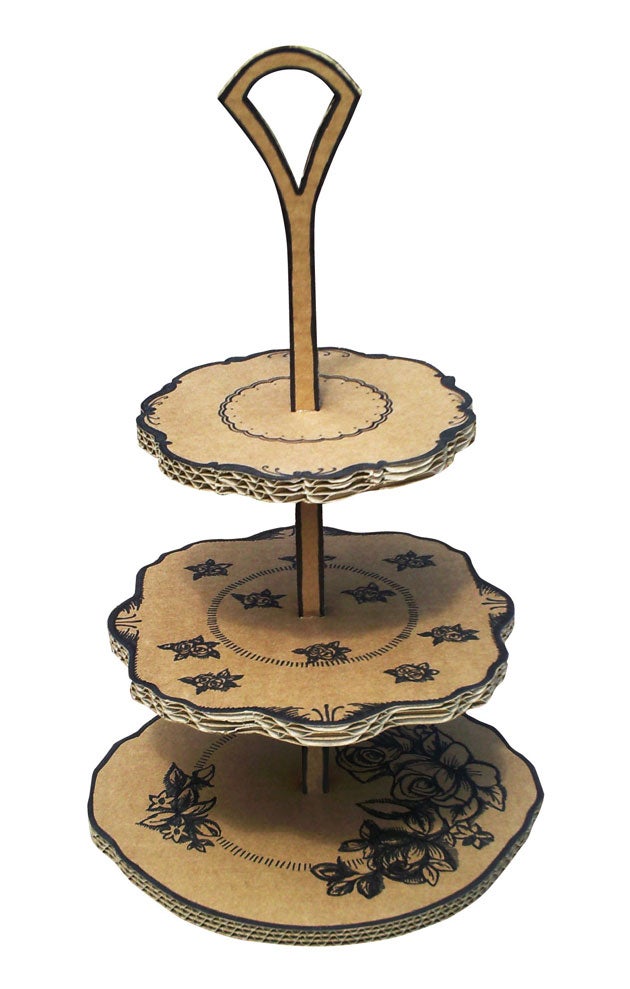Make yourself a cardboard home

Traditionally used for packaging, and often associated with the homeless, in recent years cardboard has climbed the ranks to sit alongside more traditional materials, such as wood, glass or plastic, as a respectable substance from which to create innovative design for the home and office.
Search for the perfect furniture with The Independent house and home database, powered by mydeco.
At 100% Design last week, cardboard designs were cropping up all over the place. One cardboard exhibitor, the Creative Trust, scooped the Best Stand Design award in the Blueprint Awards at 100% Design for its cardboard room exhibit, which was crammed full of illustrated cardboard furniture. The Creative Trust started working with cardboard following a commission from a company in Canada. "We had to use something that we could ship, which was light and which would suit our illustration style," says Jason Hoyle, a designer for the Creative Trust. “There’s something about cardboard that brings a smile to people’s faces.”
It is the surprising nature of the cardboard furniture collection at the Creative Trust that helps to make people smile. From the cardboard chaise longue or the suitcase-style cardboard drawers to the cardboard tray, complete with a cooked breakfast drawn onto the surface in black marker pen, these designs confound our expectations of what furniture is and should be by combining an unusual material with an irreverent illustrative style.
This furniture might make a unique design statement, but does it stand up to scrutiny when used in the same way as other household furniture? "It is possible to do a chair or table that will last," says Hoyle, who likens cardboard to a "natural MDF." At the Creative Trust, all cardboard is recycled. Much of this is sourced from Dufaylite, a company specialising in a highly cost effective board made from recycled paper and cardboard. Using a unique ‘honeycomb’ structure, Dufaylite is able to create a range of thicknesses, which can cater to a huge variety of applications and withstand impact or heavy loads while remaining lightweight with exceptional cushioning properties due to its inner cellular structure.
It is, in many ways, the perfect material - and it must be easy to work with too, I suggest. No, says Hoyle, "it's actually quite a hard product to work with. It has a grain almost like wood, so that you can't cut it in certain ways. It's not as easy as it seems, but once you get the hang of it, it's a nice product. I think quite a few things were mocked up in cardboard originally, but now you can use the cardboard as the project itself."
More and more designers are using cardboard as their material of choice. Giles Miller, another exhibitor at 100% Design, has a fantastic selection of cardboard home accessories and furniture, including the Flute table light, available from Bouf.com. This is made in the UK from sustainable corrugated cardboard with angles in the corrugation alternated to form a beautiful floral pattern in the surface of the shade.
The company Paperself also designs with cardboard. Its transformer cardboard coffee table is flat pack and recyclable, with users able to assemble units by themselves and print or sketch on the surface.
The potential of cardboard doesn’t stop at furniture or home accessories. Earlier this year, London-based interior design consultancy, Studio DB designed a permanent shop in Brixton Village, with fittings completely constructed from cardboard, glue and string.
Meanwhile, last year, Dutch designers Joost van Bleiswijk and Alrik Koudenburg created an entirely cardboard office for Amsterdam-based advertising agency, Nothing, where staff urge visitors to treat brown walls as a blank canvas.
Cardboard is affordable, colourful, safe, environmentally friendly and can be easily folded away making it a great material for children’s furniture. At Kroom, all furniture is made from reinforced cardboard recyclable material with a dedicated 'Kids' range for children's rooms and play areas. Other companies such as Cardboard Toys or Paperboard are similarly dedicated to the benefits of cardboard products for children. Parents, meanwhile, must be relieved to let youngsters have free rein drawing on inexpensive cardboard children’s furniture as opposed to the newly painted walls.
Cardboard might make fine boxes when moving home, or seem to make a comfortable bed when faced with a cold pavement, but its real potential as an eco-friendly, cost-effective design material is only just beginning to be realised.
Emily Jenkinson is interiors writer for furniture and interior design website mydeco.com.
Join our commenting forum
Join thought-provoking conversations, follow other Independent readers and see their replies
Comments
Bookmark popover
Removed from bookmarks